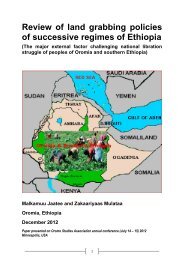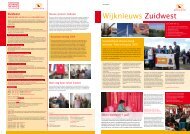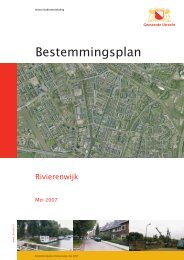freakonomics
freakonomics
freakonomics
Create successful ePaper yourself
Turn your PDF publications into a flip-book with our unique Google optimized e-Paper software.
NOT AS MUCH CRIME AS THERE ACTUALLY WAS: See Mark Niesse, “Report<br />
Says Atlanta Underreported Crimes to Help Land 1996 Olympics,” Associated Press,<br />
February 20, 2004.<br />
SUDHIR VENKATESH’S LONG, STRANGE TRIP INTO THE CRACK DEN: As of<br />
this writing, Venkatesh is an associate professor of sociology and African American<br />
studies at Columbia University. / 93–99 The biographical material on Venkatesh was<br />
drawn largely from author interviews; see also Jordan Marsh, “The Gang Way,” Chicago<br />
Reader, August 8, 1997; and Robert L. Kaiser, “The Science of Fitting In,” Chicago<br />
Tribune, December 10, 2000. / 99–109 The particulars of the crack gang are covered in<br />
four papers by Sudhir Alladi Venkatesh and Steven D. Levitt: “The Financial Activities<br />
of an Urban Street Gang,” Quarterly Journal of Economics 115, no. 3 (August 2000), pp.<br />
755–89; “‘Are We a Family or a Business?’ History and Disjuncture in the Urban<br />
American Street Gang,” Theory and Society 29 (Autumn 2000), pp. 427–62; “Growing<br />
Up in the Projects: The Economic Lives of a Cohort of Men Who Came of Age in<br />
Chicago Public Housing,” American Economic Review 91, no. 2 (2001), pp. 79–84; and<br />
“The Political Economy of an American Street Gang,” American Bar Foundation<br />
working paper, 1998. See also Sudhir Alladi Venkatesh, American Project: The Rise and<br />
Fall of a Modern Ghetto (Cambridge, Mass.: Harvard University Press, 2000). / 104Crack<br />
dealing as the most dangerous job in America: According to the Bureau of Labor<br />
Statistics, the ten most dangerous legitimate occupations are timber cutters, fishers, pilots<br />
and navigators, structural metal workers, drivers/sales workers, roofers, electrical power<br />
installers, farm occupations, construction laborers, and truck drivers.<br />
THE INVENTION OF NYLON STOCKINGS: It was Wallace Carothers, a young Iowaborn<br />
chemist employed by DuPont, who, after seven years of trying, found a way to blow<br />
liquid polymers through tiny nozzles to create a fiber of superstrong strands. This was<br />
nylon. Several years later, DuPont introduced nylon stockings in New York and London.<br />
Contrary to lore, the miracle fabric’s name did not derive from a combination of those<br />
two cities’ names. Nor was it, as rumored, an acronym for “Now You’ve Lost, Old<br />
Nippon,” a snub to Japan’s dominant silk market. The name was actually a hepped-up<br />
rendering of “No Run,” a slogan that the new stockings could not in fact uphold, but<br />
whose failure hardly diminished their success. Carothers, a long-time depressive, did not<br />
live to see his invention blossom: he killed himself in 1937 by drinking cyanide. See<br />
Matthew E. Hermes, Enough for One Lifetime: Wallace Carothers, Inventor of Nylon<br />
(Philadelphia: Chemical Heritage Foundation, 1996).<br />
CRACK SLANG: The Greater Dallas Council on Alcohol and Drug Abuse has compiled<br />
an extraordinarily entertaining index of cocaine street names. For cocaine powder:<br />
Badrock, Bazooka, Beam, Berni, Bernice, Big C, Blast, Blizzard, Blow, Blunt, Bouncing<br />
Powder, Bump, C, Caballo, Caine, Candy, Caviar, Charlie, Chicken Scratch, Coca,<br />
Cocktail, Coconut, Coke, Cola, Damablanca, Dust, Flake, Flex, Florida Snow, Foo Foo,<br />
Freeze, G-Rock, Girl, Goofball, Happy Dust, Happy Powder, Happy Trails, Heaven,<br />
King, Lady, Lady Caine, Late Night, Line, Mama Coca, Marching Dust/Powder, Mojo,<br />
Monster, Mujer, Nieve, Nose, Nose Candy, P-Dogs, Peruvian, Powder, Press, Prime<br />
Time, Rush, Shot, Sleighride, Sniff, Snort, Snow, Snow-birds, Soda, Speedball, Sporting,









